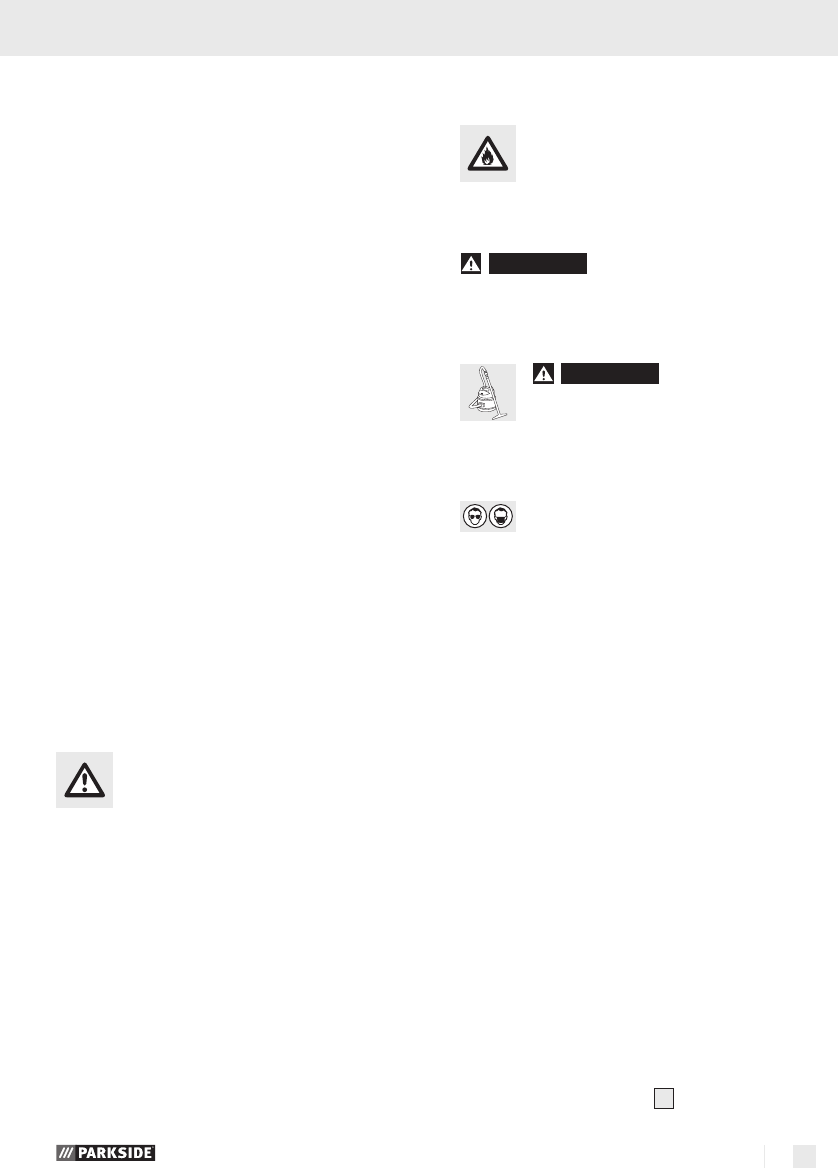
9 GB/IE/CY
General safety advice for electrical power tools
d) When not in use always ensure that
electrical power tools are kept out of
reach of children. Do not let anyone use
the device if he or she is not familiar
with it or has not read the instructions
and advice. Electrical power tools are danger-
ous
when they are used by inexperienced people.
e) Look after the device carefully. Check
that moving parts are working prop-
erly and move freely. Check for any
parts that are broken or damaged
enough to detrimentally affect the
functioning of the device. Have dam-
aged parts repaired before you use
the device. Many accidents have their origins
in poorly maintained electrical power tools.
f) Keep cutting tools clean and sharp.
Carefully maintained cutting tools with sharp
cutting edges are less likely to jam and are
easier to control.
g) Use the electrical power tool, accesso-
ries, inserted tools etc. in accordance
with these instructions and advice, and
the stipulations drawn up for this par-
ticular type of device. In doing this,
take into account the working condi-
tions and the task in hand. The use of
electrical power tools for purposes other than
those intended can lead to dangerous situations.
Appliance-specific
safety Instructions
To avoid the risk of injury or fire as well
as health risks:
J When working outdoors, connect
the appliance via a residual current
circuit-breaker with a maximum
breaking current of 30 mA.
J Only use an extension cord certified
for use outdoors.
J Secure the workpiece firmly. Use
clamps / vices to firmly hold the work-
piece. It is thus better secured than just with
your hand.
J In case of danger, immediately pull
the power plug from the socket.
J Always run the power cord away
from the appliance to the rear.
J
DANGER OF FIRE FROM FLYING
SPARKS! Abrading metal creates
flying sparks. For this reason, always
make sure that nobody is placed in any danger
and that there are no inflammable materials
near the working area.
J
WARNING!
NOXIOUS FUMES!
Any harmful / noxious dusts generated from
sanding represent a risk to the health of the
person operating the device and to anyone
near the work area.
J
WARNING!
DUST HAZ
ARD!
When sanding wood and in particular
when working on materials that give
rise to dusts that are hazardous to health, the
sander must be connected to a suitable external
dust extraction device.
Wear protective glasses and
a dust mask!
J Ensure sufficient ventilation when work-
ing on plastics, paints, lacquers, etc.
J Do not soak materials or surfaces to be
worked with liquids containing sol
vents.
J Avoid sanding of lead-based paints or
other materials that are hazardous to
health.
J Material containing asbestos may not
be worked on. Asbestos is considered a
carcinogen.
J The appliance is designed for dry sur-
face sanding of wood, plastic, metal
and smoothing compounds as well as
painted surfaces.
J Never work on moistened materials
or wet surfaces. Water entering an electri-
cal device increases the risk of electric shock.
J Always hold the appliance firmly with
two hands while working (see also
Fig. D, E).
J Never support your hands next to or
in front of the device or on the surface
being worked as there is a risk of
injury in the event of slipping.
J Always switch off the appliance and
allow the sanding pad
9
to come to
35324_ORBITAL SANDER_Content_LB6.indd 9 23.07.09 15:23















